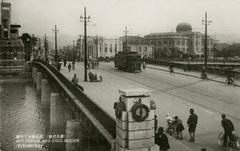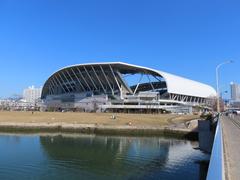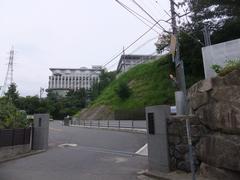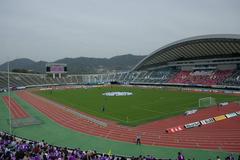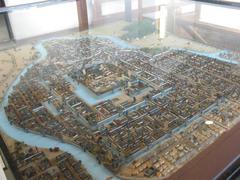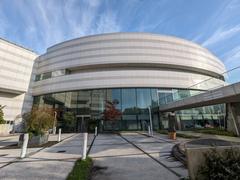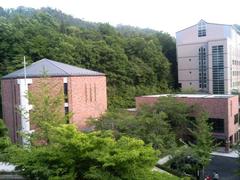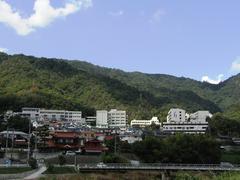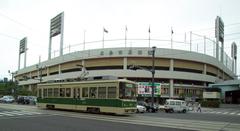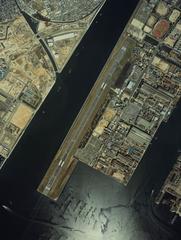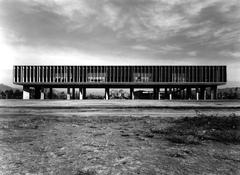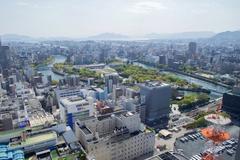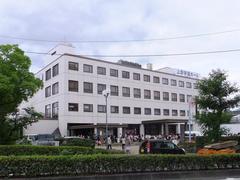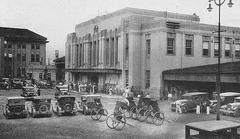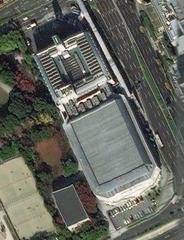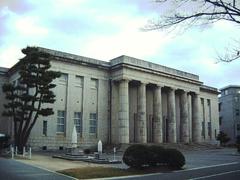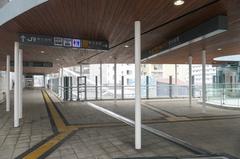Kabe Station Hiroshima: Visiting Hours, Tickets, and Historical Sites Guide
Date: 04/07/2025
Introduction
Nestled in the northern reaches of Hiroshima City’s Asakita Ward, Kabe Station (可部駅) is a crucial hub that connects urban Hiroshima with its tranquil suburbs and scenic landscapes. As the northern terminus of the JR West Kabe Line, Kabe Station is not just a commuter gateway—it’s also a springboard for travelers exploring Hiroshima’s cultural and natural wonders. Whether you’re a history buff, a nature lover, or simply seeking local experiences, Kabe Station stands out for its accessibility, comprehensive facilities, and rich historical context.
This guide provides in-depth information on Kabe Station’s visiting hours, ticketing procedures, accessibility features, historical significance, and the best attractions nearby. For up-to-date train schedules and official data, consult the JR West Kabe Line official page. For broader historical and cultural context, refer to Explore Hiroshima and Wikipedia: Kabe Line.
Table of Contents
- Introduction
- Visiting Hours and Ticket Information
- Accessibility and Facilities
- Historical Background
- Key Nearby Attractions
- Practical Travel Tips
- FAQ
- Visuals and Maps
- Conclusion & Call to Action
- References
Visiting Hours and Ticket Information
Operating Hours:
Kabe Station operates daily from approximately 5:00 AM to 12:00 AM. Facilities open with the first train and close after the last departure. Always check the current JR West timetable for exact hours.
Ticketing Options:
- Automated Machines & Staffed Counters: Purchase single-ride tickets or commuter passes.
- IC Cards: Use ICOCA, Suica, and other compatible cards for seamless, cashless travel.
- Fares: A one-way ticket from Kabe to Hiroshima Station costs approximately 320 yen.
- Japan Rail Pass: Accepted on the JR Kabe Line, ideal for tourists.
For official fares and ticket details, visit the JR West Kabe Line official page.
Accessibility and Facilities
Barrier-Free Access:
The station is fully equipped with elevators, ramps, and tactile paving for visually impaired visitors. Modern restrooms with accessible stalls and baby-changing facilities are available.
Facilities Include:
- Waiting Areas: Covered benches on each platform.
- Coin Lockers: Near the entrance (¥300–¥800 per day).
- Information Desk: Multilingual support and brochures during peak hours.
- Vending Machines: For drinks and snacks.
- Bicycle Parking & Taxi Stand: Outside the main exit.
Safety:
Security cameras, emergency call buttons, and regular staff patrols ensure a safe, clean environment.
Historical Background
Early Development:
Kabe Station dates to the early 20th century, originally built by Dainippon Kidō (1909–1911) with a narrow-gauge track (Wikipedia: Kabe Line). It underwent several ownership changes before nationalization in 1936.
Modernization:
The line was electrified and gauge-converted in the late 1920s, facilitating its role as a critical regional connector. Postwar extensions and upgrades paralleled Hiroshima’s reconstruction and urban expansion (Railways of Japan: Kabe Line).
Recent Developments:
Following a period of declining rural ridership and partial closure, the Kabe–Aki-Kameyama section was reopened in 2017, including the new Kōdo-Homachigawa Station—marking the first JR Group line reinstatement since privatization (Wikipedia: Kabe Line).
Key Nearby Attractions
1. Sandankyō Gorge:
A celebrated natural area, famous for hiking and autumn foliage. Accessible by bus from Kabe Station.
2. Mitaki-Dera Temple:
Historic temple renowned for cherry blossoms and autumn colors—just a short train ride away.
3. Hiroshima Peace Memorial Park & A-Bomb Dome:
A UNESCO World Heritage Site that can be reached via Hiroshima Station.
4. Local Shopping Street:
Enjoy Hiroshima-style okonomiyaki and browse traditional shops near the station.
5. Kōdo-Homachigawa Station:
Connects travelers to local neighborhoods steeped in tradition.
For more details on regional highlights, see Japan Travel, Edudwar, Touropia, and Live Japan.
Practical Travel Tips
- Use IC Cards for quick access and transfers.
- Avoid peak commuter hours (7:00–9:00 AM, 5:00–7:00 PM) for a quieter experience.
- Coin lockers are ideal for luggage storage during sightseeing.
- Local bus connections extend access to outlying attractions.
- Bilingual signage and helpful staff make navigation straightforward, though some bus and local shop signage may be in Japanese only.
FAQ
Q: What are Kabe Station’s opening hours?
A: Usually from 5:00 AM to midnight.
Q: How can I buy tickets?
A: Automated machines and staffed counters are available; IC cards (ICOCA/Suica) are accepted.
Q: Is Kabe Station accessible for disabled travelers?
A: Yes, it features elevators, ramps, and tactile paving.
Q: What’s the fastest way to Hiroshima city center?
A: Frequent JR Kabe Line trains connect to Hiroshima Station in about 20 minutes.
Q: Are there nearby attractions?
A: Yes—Sandankyō Gorge, Mitaki-Dera Temple, Peace Memorial Park, and more.
Visuals and Maps
Explore the Kabe Line route map and view official station images on the JR West website. For enhanced navigation, digital maps and virtual tours are available via Hiroshima tourism portals.
Conclusion & Call to Action
Kabe Station is a harmonious blend of Hiroshima’s historical growth and modern convenience. With comprehensive facilities, accessible ticketing, and a strategic location, it’s the gateway to both the city’s urban core and its scenic, cultural north. Plan your visit today with the Audiala app, explore more guides on Hiroshima’s attractions, and follow us for the latest travel updates.
References
- JR West Kabe Line official page
- Explore Hiroshima
- Wikipedia: Kabe Line
- Railways of Japan: Kabe Line
- Japan Travel
- Edudwar
- Touropia
- Live Japan
